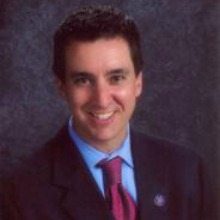
WashingtonExec’s STEM Executive series spotlights local government and private sector executives and their insights about the shortage in STEM workers/local pipeline gap. We’ll publish the stories periodically throughout “SeptSTEMber” in Q&A or feature format.
The greater Washington area employs the largest percentage of STEM workers (18.8 percent in Maryland and 16.5 in Virginia, according to a U.S. Census report), suggesting the area depends heavily on STEM competence for its continued sustainability. And while industry and government execs are eager to hire STEM graduates, the number of U.S. high school seniors who are both proficient and interested in STEM lies at a meager 16 percent.
WashingtonExec interviewed Dr. Evan Glazer, Principal at Thomas Jefferson High School for Science and Technology.
WaahingtonExec: When did you become interested in STEM issues?
Dr. Evan Glazer: I’ve always been interested in STEM, starting my career as a math teacher after college. I grew up in a family without much money, so I became attracted to helping younger students in similar situations by creating extension and outreach STEM programs.
If we tracked mathletes and robotics kids like we did sports stars, and offered scholarships in the same manner, then we’d probably see greater interest. If students put in the same amount of time into STEM as they did athletics, I think we’d make a lot of great progress.
WaahingtonExec: What do you see as the underlying root of this problem?
Dr. Evan Glazer: I think younger students need good mentors and enrichment experiences to get them excited about STEM. The mentor could be a teacher, a parent or a community member who cares about helping students. Middle-upper socioeconomic classes often have resources to locate good mentors for their kids, so I perceive the root of the problem is identifying and sustaining mentors for students when they are not available.
WaahingtonExec: How and where should policymakers be focusing their resources and efforts to augment the pipeline and address the underlying problem?
Dr. Evan Glazer: I also believe kids can fall behind without good mentors, and the gap grows over time. Therefore, the pipeline needs a lot of basic skill development to fill gaps – students should spend 12 months and longer days in school. As the gaps close, provide good mentors for those students (research/internship/enrichment) so they feel excited to excel in STEM.
WaahingtonExec: What challenges do you see currently impeding the path to implementing that solution and making STEM reform a priority in the U.S.?
Dr. Evan Glazer: I believe STEM reform is a priority in the U.S. However, I don’t think people realize it’s a lot of work. Offering a tutoring service is a nice gesture, although students need sustainable support that track every student. If we tracked mathletes and robotics kids like we did sports stars, and offered scholarships in the same manner, then we’d probably see greater interest. If students put in the same amount of time into STEM as they did athletics, I think we’d make a lot of great progress.
WaahingtonExec: Why do you care?
Dr. Evan Glazer: The industry and research need for STEM specialists is extraordinary. Our economy and quality of life depends on advancements in STEM. If we can spark more interest at an early age through K-12 programs, then there’s greater hope for the future. At TJHSST, we have created many outreach and extension programs.
STEMbassadors provide volunteer support to more than 100 elementary and middle schools, the middle school summer Science and Technology Institute provides one week inquiry-based exploratory seminars, and special symposia, such as Science and Techstravaganza, are offered for thousands of students during the year to excite younger audiences with hands-on activity.
We are now developing an electronic network, the Jefferson Collaborative Inquiry and Research Network (JCIRN), to extend outreach and research partnerships to more audiences in the future.


